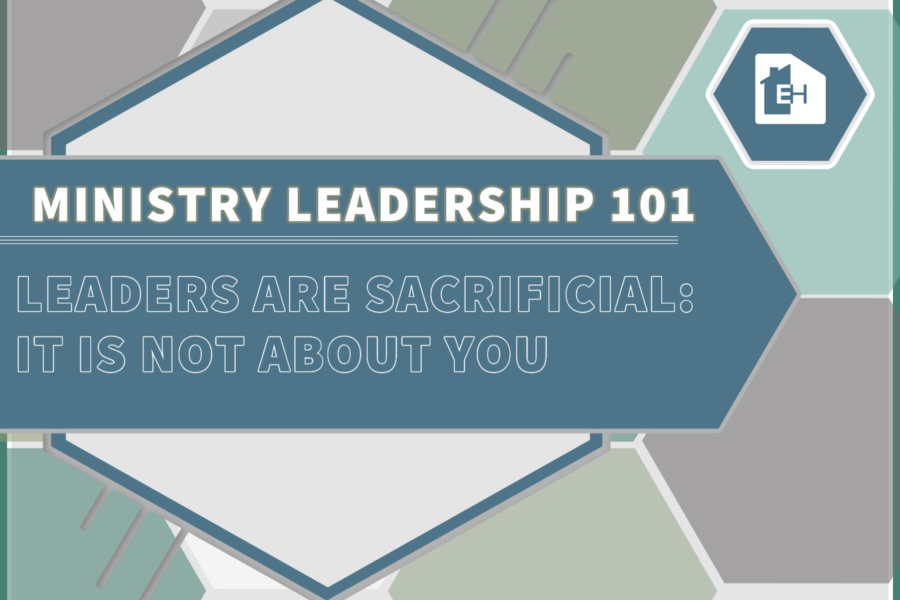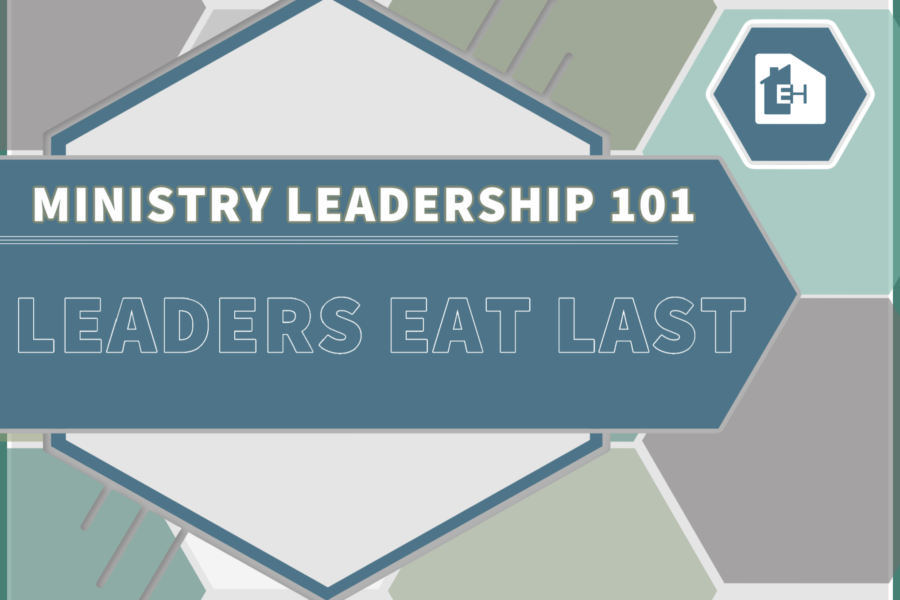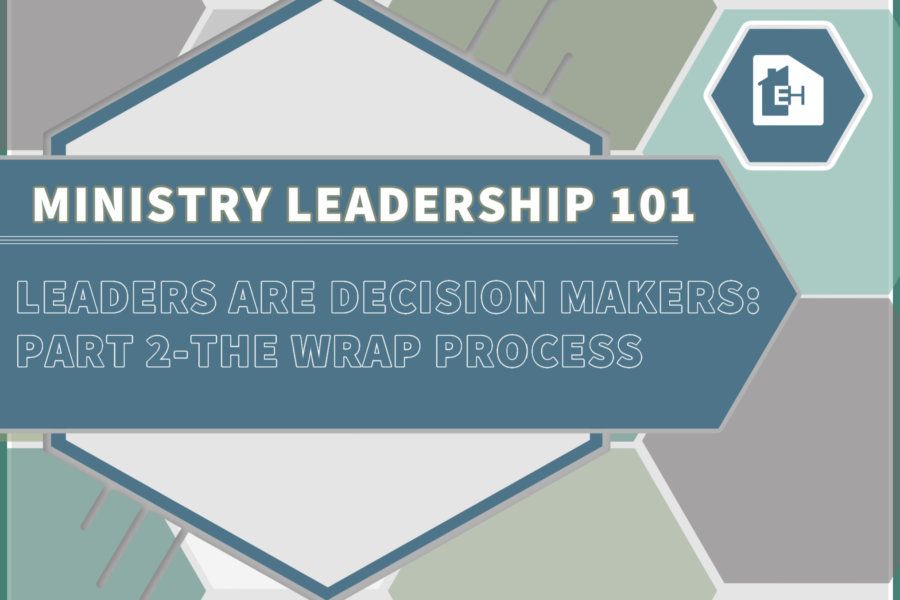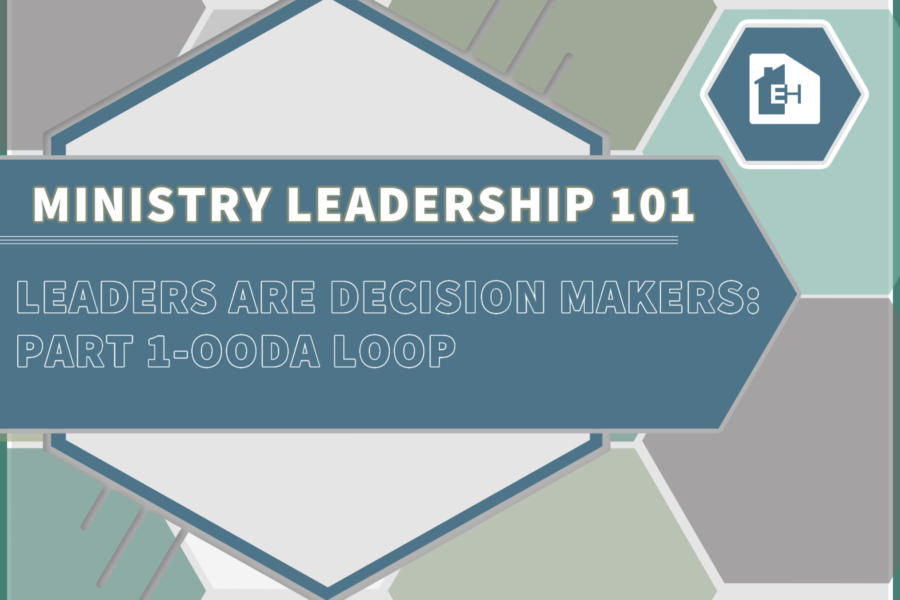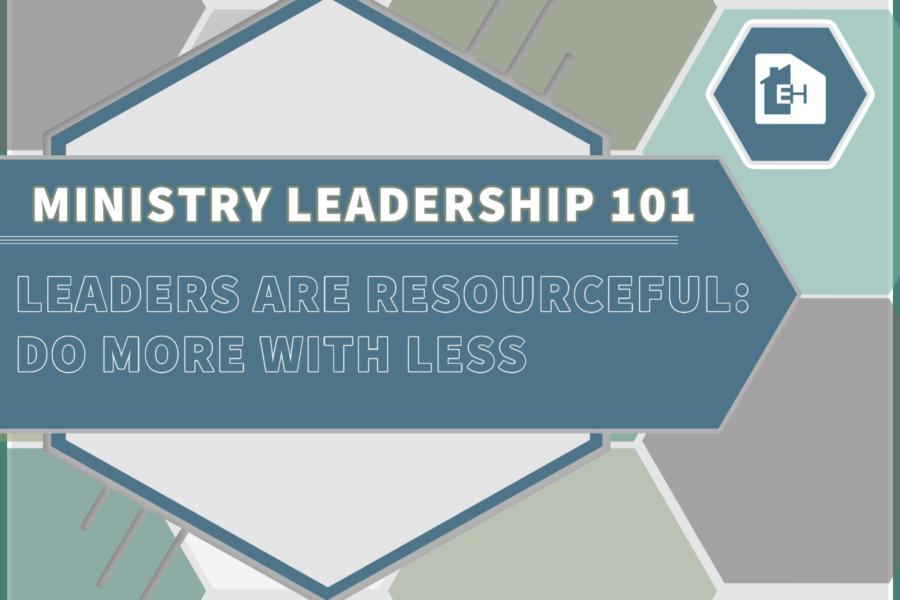As church and ministry leaders, we are called upon to make decisions in many aspects of our calling. While the nature of some decisions may require wide consultation with others, maybe even the involvement of the whole church, many other decisions can and should be made by those given specific responsibilities for ministry. Likewise, as leaders, we are often responsible to lead a group through decision making process.
So how do we do that?
In our last article on decision making, we covered the OODA Loop as a personal decision-making strategy. Today we will examine the WRAP Process.
WRAP Process. Designed by Chip and Dan Heath.
See their book Decisive for an in-depth study of their work. I highly recommend this book for all leaders!
Bestselling authors Chip and Dan Heath (other works include Switch, Made to Stick, and Power of Moments) present their findings on how to best make decisions. Both Heath brothers are college professors who have immense experience in business and organizational development.
Let’s break down the four parts of the WRAP Process and see how they fit together.
1. Widen Your Options.
The first step in the WRAP Process is to widen one’s options. The key action here is to break out of a narrow frame and expand the set of options you consider. To help leaders think through this part of the process, the Heath brothers list a few examples of how to widen your options:
- Find someone who has solved your problem. Seek out those who have been in similar circumstances. What did they do? Why did they do it?
- Multi-track – think AND not OR. Always think AND. Can you follow multiple paths at once? Can you combine options to get the best results?
- Run the vanishing options test. What if your preferred course of action was not available?
2. Reality-Test Your Assumptions.
To fight the confirmation bias and ensure that when you are assessing your options gather information you can trust you need to test your assumptions. How can you do this?
- Consider the opposite. If you think someone is the right person for the job, consider why they may be wrong. If a new ministry program looks appealing, consider why you should not do it.
- Ask disconfirming questions. Instead of asking questions like: “What do you think?” or “Do you like this idea?” Ask disconfirming questions: “What’s the biggest obstacle you see?” “If we failed, why do you think it would be?”
- This is their term to describe “sampling your option.” Can you try your decision in a limited scope and scale? What kind of experiment can provide you with additional data?
3. Attain Some Distance.
To resist the disrupting influence of short-term emotion and ensure that you make a decision based on your values and priorities it is important to take some time to make your decision. Please note, Chip and Dan are not encouraging a lack of initiative or a poor bias for action. Instead they are encouraging proper timing of decisions. Here are few tools to help:
- Try 10/10/10 Rule. Ask yourself how will you feel about this decision 10 minutes, 10 months, and 10 years from now. This helps you identify the short-term and long-term implications of your decision.
- Shift perspective. What would I tell my best friend to do in this situation? If I were replaced tomorrow, what would I tell my successor to do?
- Gather more options or information. Repeat steps 1 and 2 again.
4. Prepare to be Wrong.
To avoid being overconfident about the way our decisions will unfold, take the opportunity to plan for both good and bad outcomes. Try the following:
- Bookend the future. Set an expiration date for your decision.
- Use a safety factor. Build in extra time in the schedule. Keep additional funds in the budget. What happens if the decision takes more time and money?
- Set a tripwire. Imagine if your church was used as an example of poor decision making because of your current situation. If that were true, why would it be? What do you need to keep an eye on to prevent that? What tripwires can your team set?
Decision-making leaders are leaders who solve problems by making good decisions that result in lasting solutions. As a leader, spend some time identifying your decision making process. If you don’t have one, perhaps adopt the WRAP Process.
Ministry Leadership 101 is a series of articles and videos by Brad Flurry based upon his experiences leading Marines for almost two decades. He captures lessons and principles from his career in the military and shares how they can be applied to lead ministry teams. You can reach him at bflurry@kingsland.org.


